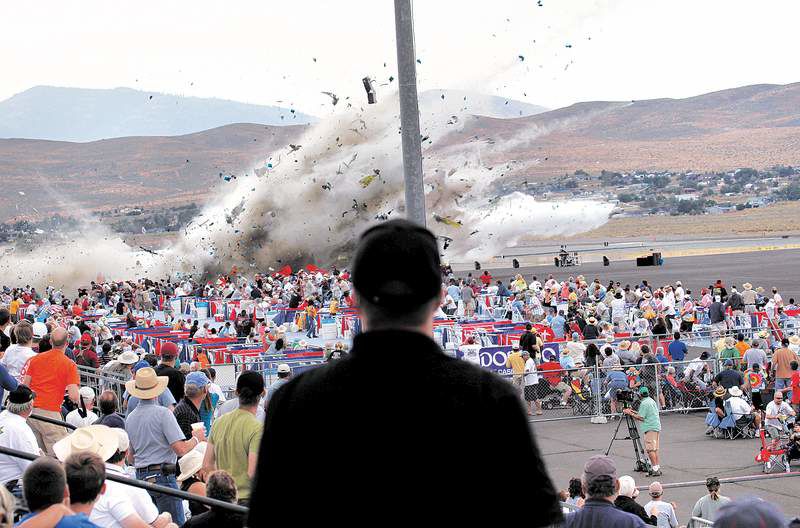In Reno, seeking answers
Published 5:00 am Sunday, September 18, 2011

- A P-51 Mustang airplane crashes into the edge of the grandstands at the Reno Air show on Friday in Reno, Nev. The World War II-era fighter plane crashed during a race, creating a horrific scene strewn with smoking debris.
RENO, Nev. — It was, for fans and followers of the high-speed sport of air racing, a sure sign of serious trouble: the vintage P-51 Mustang, the World War II fighter known as the “Cadillac of the Skies,” pitching violently skyward, in a frantic effort by the pilot to gain altitude — and to buy time.
And then, just seconds later, that fight — and the flight — was over, as the plane plunged into a crowd assembled at the National Championship Air Races and Air Show in Reno. By Saturday afternoon, the death toll had reached nine, including the pilot, Jimmy Leeward, 74. The accident also injured dozens of others, with some victims in critical condition and others with severed limbs.
“I saw him pull up and then tip over to the right,” said Howard Struble, a member of a competing team. “And then our hearts stopped, because we knew what was coming.”
In an inherently risky sport, Friday’s crash was one of the deadliest. And whatever the cause, it seemed likely to raise questions over whether the thrill of the events, billed as the “world’s fastest motor sport,” was reason enough to risk fans’ lives.
On Saturday afternoon, Mark Rosekind, a member of the National Transportation Safety Board, said investigators discovered both a “component” from the plane and a partial piece of its tail, where a 3-foot crater marked the spot of impact. That discovery may lend credence to speculation about a mechanical failure of a critical control at the back of the plane known as the trim tab. But Rosekind said other issues were also under scrutiny, including the ages of the pilot and the plane, how the plane had been modified, its maintenance records and the race’s safety procedures.
“We’re not just interested in the metal,” said Rosekind, who added that the board would also be evaluating the FAA’s oversight of the air race.
The accident occurred about 4:30 p.m. at Reno-Stead Airport, a small general aviation outpost in the hills north of the city on a fair afternoon with little wind. It was the last race of the day, a marquee event noted for its blistering speeds, skilled pilots and altitudes as low as 100 feet.
The annual races generate tens of millions of dollars for the Reno economy, and for the pilots, there is the lure of $1 million in prize money. On Friday, a Reno casino sports book — for the first time in the history of the race — took bets on the outcome. The betting was suspended after the crash.






